Today I kissed a giraffe, and I’m not ashamed to say that I enjoyed it. Remarkably, this wasn’t even the most exciting thing that happened on our fourth day in Kenya – the giraffe-smooching barely made the top five. We had a packed schedule, so an early start was in order. To catch the best wildlife in Nairobi National Park, we would have to be there at the crack of dawn, which meant hauling our yawning carcasses out of bed at 5am. Having battled through the pulsating Nairobi traffic, which seemed to operate on a sort of carefully choreographed insanity, we arrived at the gates of the park and prayed for some lions.
Nairobi National Park is something of an oddity, as far as Kenyan wildlife reserves go. It is both the oldest and the smallest in the country, having originally been established by the British colonial government in 1946. What is most remarkable about this park is the fact that it lies in such close proximity to one of the biggest metropolitan hubs in East Africa, and yet within its confines can be found almost every major species of Kenyan megafauna. The most notable exception is the African elephant, but the rest of the so-called ‘Big Five’ (lion, leopard, buffalo, black rhino) are all there for the spotting. There is something quite surreal about watching a giraffe silhouetted against a backdrop of skyscrapers, the world’s tallest animal peacefully going about its business while the world’s tallest buildings shimmer in the near distance.
Mandela was on top form this morning, spotting a new bird species every minute. Sometimes it would be a large, dark shape swooping overhead, with its curved bill and black-and-white plumage identifying it as the sacred ibis that was once revered in ancient Egypt. At other points, white-backed vultures would frown at us from the trees, wondering when we’d hurry up and start smelling a bit more dead. Helmeted guinea fowl shuffled through the undergrowth as we drove past, resplendent with their spotted feathers and blue heads but still somehow struggling to avoid looking like chickens in fancy dress.
It’s remarkable how quickly one can become blasé about animals that had the power to shock and delight only days ago. On the first morning, we yelped at every impala sighting; 48 hours later and they had become part of the scenery, eliciting little more than a passing nod. Luckily, Nairobi National Park had just the thing to shake us out of our complacency: a massive herd of African buffalo. One moment we were bumping along the dirt road, watching a grey crowned crane wheeling lazily through the air, and then all of a sudden we were surrounded. We gawked at the buffaloes, and they blinked back at us, entirely unbothered. Watching them peacefully chewing the cud, it was hard to believe that these gentle giants assembled before us were famed for their aggression and responsible for countless human attacks.
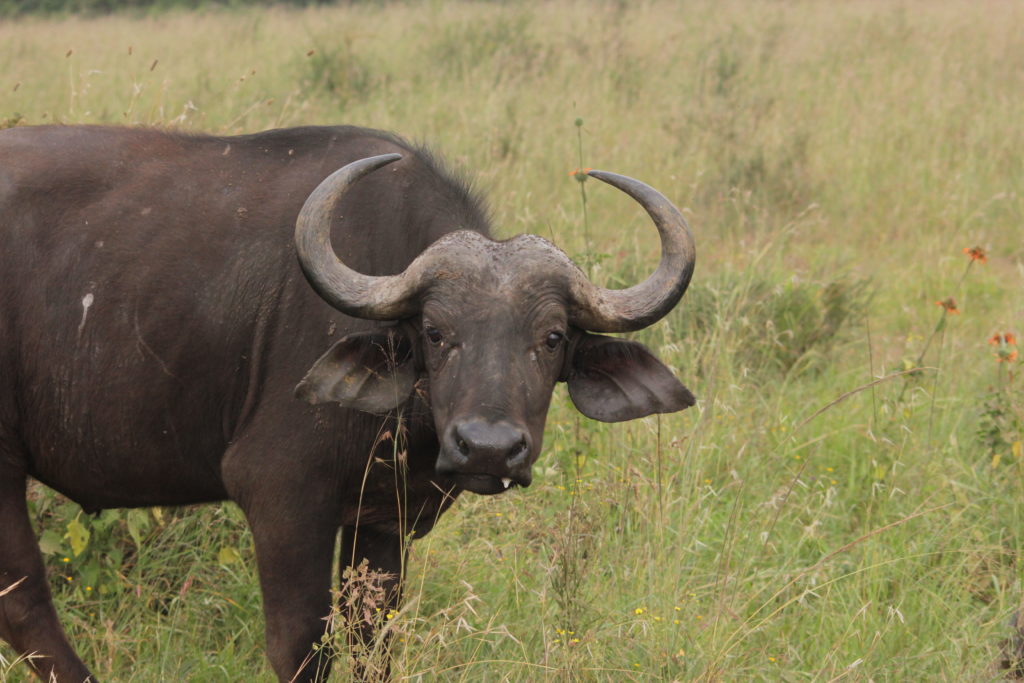
Determined not to become a statistic, we drove on before the buffaloes got tired of tolerating our presence. Deeper into the park, we chanced upon a small body of water which was heaving with birds. As we looked closer, we realised that they were accompanied by some of their much larger, scalier relatives. The sun had finally come out, and the Nile crocodiles of Nairobi were making the most of it, enjoying a leisurely basking session. In another pool of water, we spotted a hippopotamus lurking beneath the surface, given away only by its tell-tale ears and nostrils.
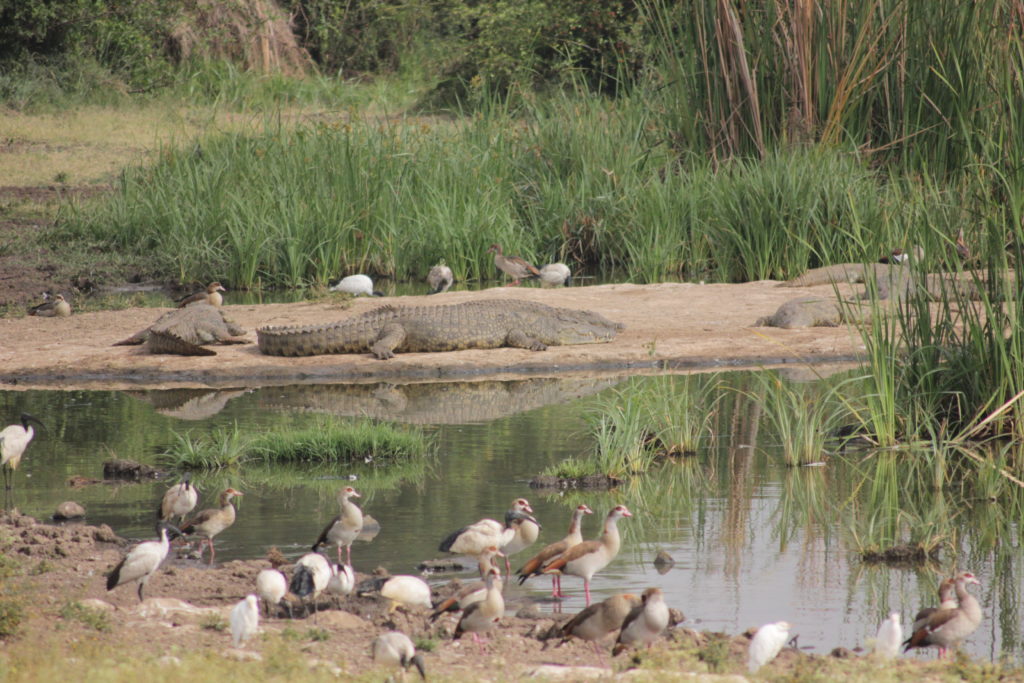

With our appetite for big beasts whetted, we turned our sights to the more ambitious goal of rhino-spotting, and were rewarded with a brief glimpse of something large and dark moving through the bushes up ahead. We set off in pursuit, but lost the trail, and had to content ourselves for the moment with a herd of Coke’s hartebeest. Then, as we scanned the horizon, not one but two black rhinoceroses came into view, idling under a tree and displaying their formidable horns. Even from a distance, I was struck by their sheer vastness – the kind of size that ought to command its own gravitational field, shaping and warping the environment around it.
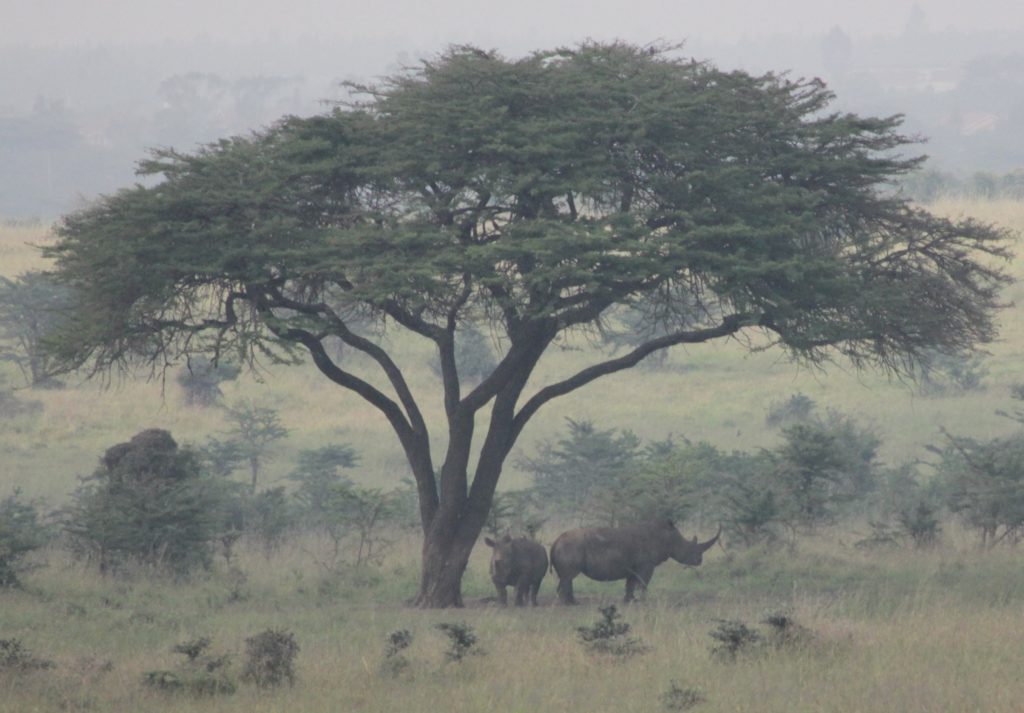
We had entirely given up hope of seeing a lion that day, content with a strong selection of sightings and frankly quite smug about those rhinos – and then, there she was. Standing in the middle of the road, languidly pacing along in plain sight, as if daring us not to notice her: a lion. Naturally, we took a great deal of notice. In contrast to our squawking reactions to previous sightings, everyone went quite quiet, as if instinctually aware that a different kind of protocol was required in the lion’s regal presence. Our jeep inched closer, while the lion continued to sidle down the road, seemingly unfussed by our proximity.
At last, we pulled up alongside her, and she struck a pose – in profile, head held high, looking like the rightful ruler of all that she saw. She emitted a little throaty growl, not quite a roar, but enough to indicate that there were other lions at large. Then she turned away from us, and padded off into the long grass, melting into the background with an ease that suddenly made me appreciate how near we might have come to lions already without catching so much as a glimpse. When we could finally see her no longer, I became aware of how little I had been breathing, and exhaled deeply. We had come for lions, and Nairobi National Park had not disappointed.
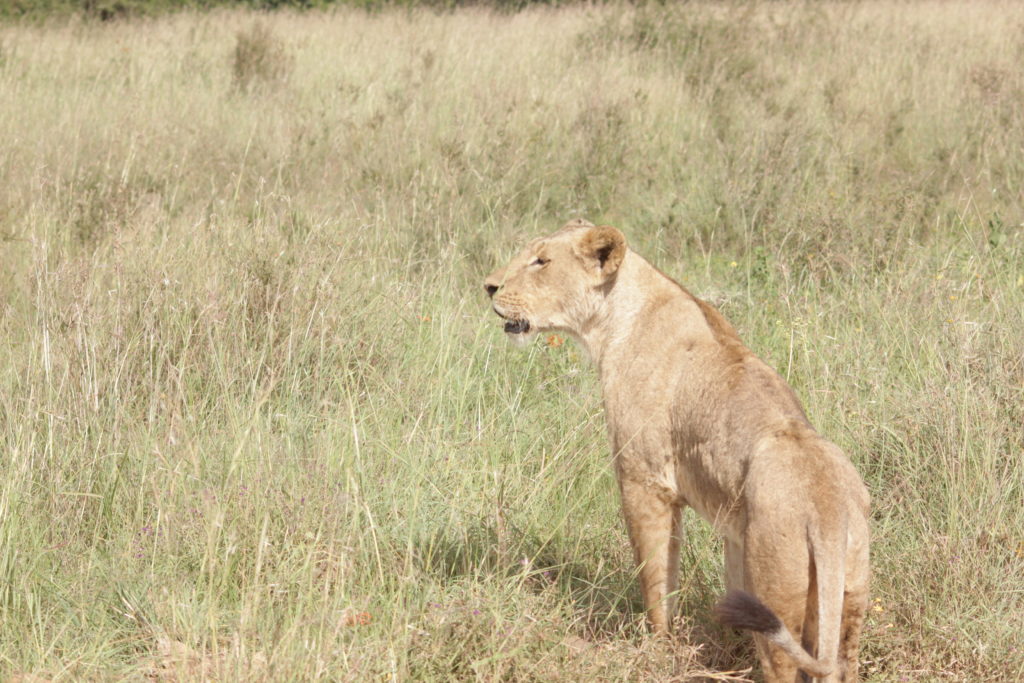
Our next stop was the David Sheldrick Wildlife Trust, a conservation body named for the founder warden of Tsavo National Park and established after his death in 1977. The trust cares for orphaned elephants, many of whom lost their parents due to poaching and other human activities. They are reared by hand, taught how to use their trunks, and fed a special milk formula that was first perfected by David’s wife Daphne – this milk is essential to their survival, as none can be obtained directly from wild elephants and calves under two years old can die within 24 hours without milk. When the elephants are old enough to be self-sufficient, usually around the age of three, they are released into Tsavo National Park (which is large enough to support elephants) and monitored until they have been adopted into a new family. These reintroductions have an impressive 98% success rate, and the trust has by now released over 200 elephants back into the wild. We were thrilled to be able to meet the 15 current residents of the orphanage, a lively bunch who rolled around cheerfully in the mud and hurled the odd lump at us whenever they decided we looked too clean.
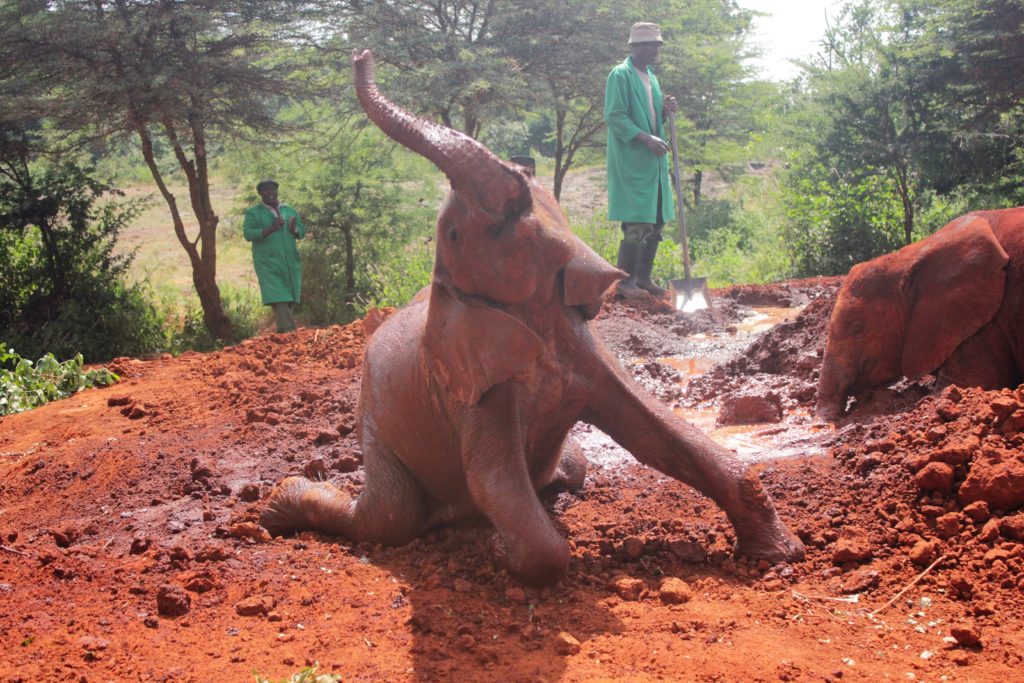
Still beaming about the baby elephants and feeling buoyed by this conservation success story, we continued on to the African Fund for Endangered Wildlife (AFEW) Giraffe Centre to have a look at its population of Rothschild’s giraffe. This giraffe subspecies numbered only 130 individuals when the centre was set up, but it has recovered significantly as a result of reintroduction programmes that established herds in Lake Nakuru National Park, Mwea National Reserve and Ruma National Park. We had the opportunity to get rather intimate with several of the dozen or so giraffes living at the centre, feeding them first from our hands and then, on Mandela’s recommendation, from our mouths. It was a decidedly unnerving experience, placing a nondescript brown pellet in my mouth and thrusting it meaningfully towards a five-metre tall animal with a 20-inch blue tongue, but I kept my nerve and was richly rewarded. The giraffes were extraordinarily gentle, and handled their tongues with enough dexterity to make anyone blush.
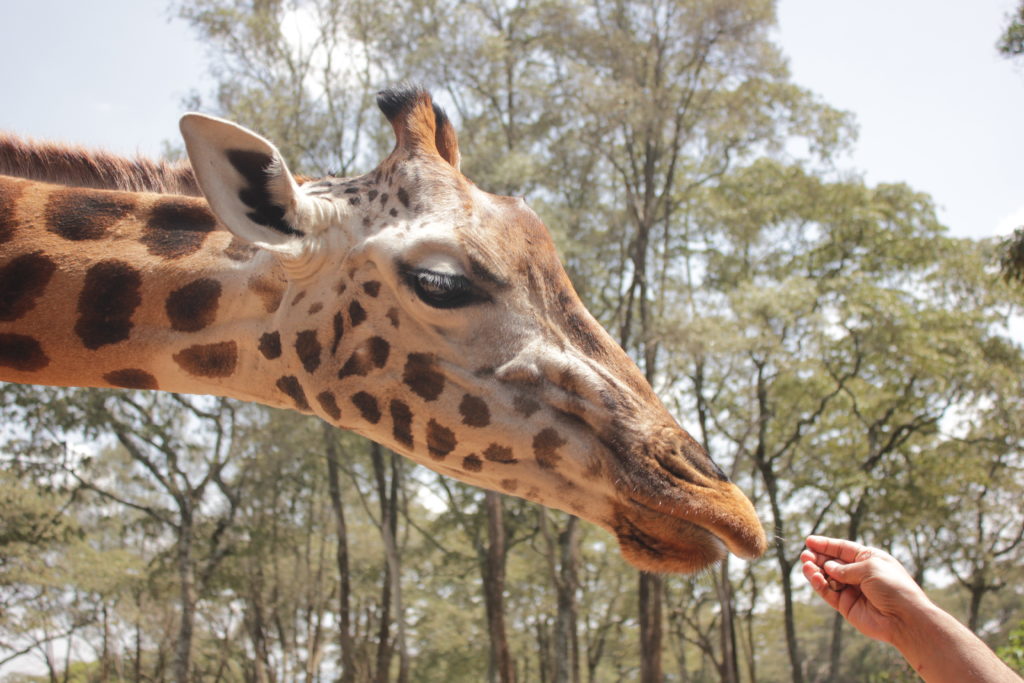
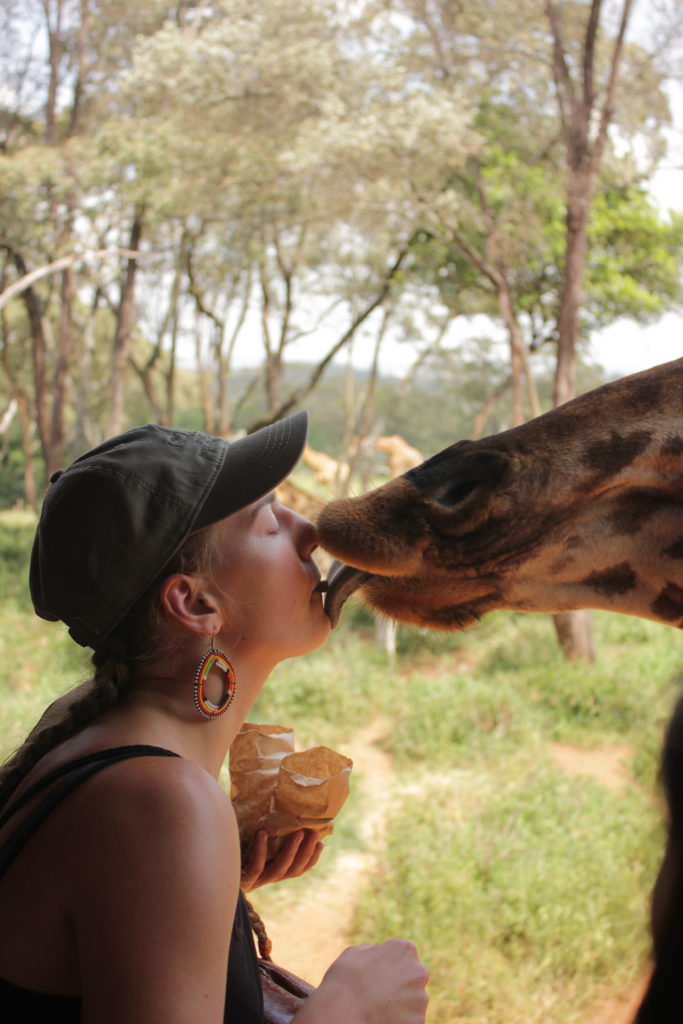
We all agreed that was enough cavorting with wildlife for one day, and scurried off before the giraffes got any funny ideas. Much of the rest of the day was spent battling our way home through the churning roads of Nairobi, still locked in its perpetual rush hour. That evening, I found myself reflecting on the rosy picture of conservation that the day’s experiences had painted. The national park was a beautiful microcosm of Kenya’s rich biodiversity, and the elephants and giraffes were displayed for maximum heart-melting effect, allowing tourists to get up close with the most charismatic of Africa’s megafauna. We had seen the side of conservation that is most palatable for a visitor to Kenya – lions stalking through the long grass, baby elephants splashing in the mud. It was by turns exhilarating and heart-warming, everything I had hoped for. I wondered, though, what side we’d see when we spoke to the local people who had to coexist with these animals on a daily basis, and whether things would be quite so clear-cut.
